- Home
- Tom Clancy
Carrier: A Guided Tour of an Aircraft Carrier Page 15
Carrier: A Guided Tour of an Aircraft Carrier Read online
Page 15
Only a decade ago NNS could expect to start a new Nimitz-class aircraft carrier every two years or so. NNS also had a share of the twenty-nine planned Seawolf-class (SSN-21) submarines on order. There were also new classes of maritime prepositioning ships, as well as massive overhaul and modification contracts to support John Lehman’s “600 Ship Navy.” But today the outlook is dramatically different, and the number of projects under way has been scaled back radically:• With the carrier force set at twelve flattops instead of fifteen, the U.S. only needs to build a carrier about every four years.
• The Seawolf program was terminated at just three boats, and the work on all three went to the General Dynamics Electric Boat Division. Thus the massive investment in specialized facilities and tooling for submarine construction will lie unused at NNS until the start of the New Attack Submarine (NSSN) program in the early 21st century.
• Now that several hundred U.S. Naval vessels are being retired because of cost and manpower, the massive overhaul and modification program is only a fraction of what was originally planned.
NNS nevertheless remains the only American shipyard capable of building nuclear-powered surface warships. If future carriers or any of their escorts are to be nuclear-powered, then NNS will build them. Since at least one more Nimitz-class carrier is planned (the as-yet-unnamed CVN-77), the yard will stay fat in flattop construction for another decade. Meanwhile, Congress has guaranteed NNS a share of the NSSN production with Electric Boat, allowing the company to utilize its investment in submarine construction facilities built for the Seawolf program years ago. There has also been a steady flow of Navy and commercial refit and modernization work, and this is proving to be highly lucrative. In fact, NNS is preparing for one of the biggest refits ever, when USS Nimitz (CVN-68) comes back into the yard for its first nuclear refueling.
Building the Boat
Before we actually go on board a Nimitz-class carrier, let’s take a look at how the ship is built. A Nimitz-class CVN is among the largest man-made moving structures. And with a price tag around $4.2 billion, it is also among the most expensive. Only the biggest commercial supertankers are larger. Such vessels are mostly hollow space, and they aren’t built to take anything like the punishment a warship must be able to absorb. On top of that, carriers must hold six thousand personnel and operate over ninety aircraft. And finally, no supertanker has a power plant of such impressive capability as the nuclear power plants on Nimitz-class—or one that requires such obsessive care. Every component of the nuclear power plant comes under the meticulous scrutiny of the Office of Naval Reactors. Very early in the history of U.S. Navy nuclear propulsion, it was realized that the first nuclear accident would mean the end of the program. Therefore, rigid inspection standards and elaborate safeguards were applied to every step of design, construction, and testing. For example, every welded pipe joint (there are thousands of them!) is X-rayed, to ensure that it has no flaws, cracks, or voids.
Strange as it may sound, building a 95,000-ton aircraft carrier is a precision operation, which requires immensely detailed planning. For example, the maximum draft of a ship being built at NNS is limited both by the size of Dry Dock 12 and by local tidal conditions. Even at an unusually high tide, Dry Dock 12 can be flooded only to a depth of about thirty-three feet/ten meters, meaning that construction of a carrier can be taken only so far before it must emerge out of the dock into the James River. Once that’s done, the hull is moored to a dock on the eastern end of the yard for final construction and outfitting. Because of the quick-moving tidal conditions near the mouth of the Chesapeake Bay, the launching is normally timed to the minute, and there are never more than a few inches to spare.
A Nimitz-class CVN gets its start in Washington, D.C., about a decade before its launching, when admirals at the headquarters of the Naval Sea Systems Command (NAVSEA, formerly known as the Bureau of Ships, the agency that manages ship construction) fix the retirement date of an aging carrier. This determines the time line for budgeting a new flattop. The time line, almost a decade long, starts at the point when money begins to be committed to the building of the new ship. Soon after that, contracts are signed for “long-lead items”—those components that can take years to order, design, manufacture, and deliver. These include nuclear reactors, turbines, shafts, elevators, and other key items that must be installed early in the construction of the ship.
Budgeting must also take into account changes and new items that go into each new carrier, for each has literally thousands of changes and improvements over earlier ships of the class. To lower the drag of the hull, the most recent Nimitz-class carriers have bulbous bow extensions below the waterline. Lowering the hull drag extends the life of the reactor cores and allows power to be diverted from propulsion to the “hotel” systems like air-conditioning and freshwater production. Most design changes are not so significant, and usually involve nothing more than a material or component change, like a new kind of steam valve, electrical switch, or hydraulic pump. Even so, every change involves written change orders, as well as stacks of engineering drawings. Back in the 1960’s and 1970’s, a small army of draftsmen, engineers, and accountants was required to produce the mountain of paper documenting the changes on a new carrier. Today, a much smaller force manages a computerized drawing and change-management system custom-programmed for NNS. In fact, in the interest of efficiency and competitiveness, the entire NNS operation has become heavily computerized.
A prime example of computerization is the ordering-and-materials-control system. NNS cannot afford a huge inventory of steel plate and other materials sitting around rusting in the humid Tidewater climate. There is only limited space for storage and construction, and every bit must stay busy for NNS to turn a profit. To minimize this potential waste, NNS has installed a computerized “just-in-time” ordering-and-materials-control system. The many components and raw materials (steel plate, coatings, etc.) that go into a Nimitz-class carrier arrive exactly when they are needed. No earlier, and no later. In this way NNS’s investment capital is not needlessly tied up, and the final cost to taxpayers is reduced by millions of dollars. The NNS work-force has also become more efficient, since fewer items need to be stored, protected, hauled from place to place, and inventoried.
The actual start of construction begins some months prior to the official date of the ceremonial keel-laying. At that time, the Dry Dock 12 cofferdam is placed so that about 1,100 feet/335.3 meters of room are opened at the rear of the dock. This leaves 900 feet/274.3 meters at the river-gate end of the dock for construction of tankers or other projects. NNS workers then begin to lay out the wooden and concrete structural blocks that the carrier will be built upon. Building a ship that displaces over 95,000 tons/86,100 metric tons on wood and concrete blocks may sound like building a skyscraper on a foundation of paper, but NNS uses lots of these blocks to spread the load around. This very old technique is also used when ships are brought into dry dock for deep maintenance. Some things just work, and cannot be improved upon.
The close tolerances in the construction of a Nimitz-class carrier demand absolute precision from the start. Exact placement of the first keel blocks is critical, as they represent the three-dimensional “zero” points upon which everything else is built. This preliminary work goes on for four to six months, until the keel-laying ceremony draws near. At the same time, some initial assemblies are welded together and stored on the floor of the dry dock, since storage space in the main construction yard is tight. At the ceremonial laying of the keel on a Nimitz-class vessel, the guests include the Secretary of the Navy, the Chief of Naval Operations, and hundreds of other dignitaries. By tradition, the ship’s “sponsor” (a sort of nautical godmother) is appointed—usually the wife of a high-ranking Administration official or politician whose favor is being sought by the Navy. Then a ceremonial weld is made in the first “keel” member (a steel box girder built up along the centerline of the lowest part of the hull), and the carrier’s construction is officia
lly under way.
Now a thirty-three-month countdown clock starts. From this day forward to the launch date, the construction process is a race to determine the milestone bonuses and resulting profits for NNS stockholders. Meanwhile, Navy officials plan dates for commissioning and first deployments, select the “plankowner” officers and crew who will first man the new carrier, and assemble the “pre-commissioning unit” (PCU). These are the sailors who will report on board the ship while it is still under construction, in order to learn every detail of maintenance and operation.
Automated flame-cutting of steel plates at NNS.
JOHN D. GRESHAM
Back at Dry Dock 12, the thirty-three-month construction moves forward rapidly. The secret to staying on schedule is “modular construction,” a technique originally pioneered by Litton-Ingalls Shipbuilding in Mississippi. Rather than constructing a ship like a building, from the bottom up, the ship’s designers break the design down into a series of modules. Each module is completed alongside the construction dock, with piping, fixtures, and heavy equipment already installed. Then it is lifted into place and “stacked” with other modules to form the hull. When that is done, the modules are “joined” (welded together). Pipes, ducts, and electric wiring bundles are connected into a mostly finished configuration, and the ship is “floated” out of the dock (or launched), with final work done alongside a “fitting-out” dock elsewhere in the yard. This mode of construction has many advantages. For one thing, the ship can be launched at a more advanced stage of construction than used to be the custom, which reduces costs considerably. Work that takes an hour to do in an NNS workshop usually takes three hours out in the yard, or eight hours in the ship once it is floating in the water. So anything that can be built in the shops or installed in the yard before it is assembled reduces costs; it is money in the bank.
Though modular military shipbuilding was pioneered by Litton-Ingalls, the scale at NNS is far greater. At NNS, they call this the “Superlift” concept. By way of comparison, Litton’s largest module weighs around 500 tons/ 453.6 metric tons, while NNS utilizes modules up to 900 tons/816.6 metric tons lugged in place by the huge bridge crane. NNS can build a Nimitz-class carrier with about a hundred “Superlift” modules. Two dozen “Superlifts” make up a Nimitz-class carrier’s flight deck, while the bow bulb and island structure are individual Superlifts.
A Superlift starts as a small mountain of steel plates, brought by rail and truck to NNS. Flame-cut to exact tolerances in the shops just south of Dry Dock 12, the plates are tack welded together by spot welds, then permanently joined by robotic welders along a pair of side-by-side production lines. These are then linked into the structural assemblies that form each Superlift. Once the basic structure is completed, cranes move it to the large assembly area next to Dry Dock 12. Then NNS yard workers crawl over and inside it to “stuff” electrical, steam, fuel, sewage, and other lines, fittings, and gear into place. Sometimes Superlifts are turned upside down, to make “stuffing” easier. When a Superlift is ready for joining, the nine-hundred-ton bridge crane is moved into position overhead, the lift cables are fastened, and the assembly in Dry Dock 12 made ready. Despite a Superlift’s gigantic size and weight, this is a precision operation, with tolerances frequently dictated by the relative temperatures of the ship assembly and the Superlift. Depending on temperature, the metal structure of a Superlift can easily expand or contract over an inch during a given day on the Tidewater.
Around the assembly yard, several dozen Superlifts are in various stages of preparation at any given time. Some interior and exterior painting is done on Superlifts, to make this nasty and environmentally sensitive job a little safer. Because power, water, and air-conditioning can be installed in a Superlift while it is being assembled, the construction process is considerably facilitated. This is particularly helpful in the hot, muggy summers and cold, wet winters of the Tidewater region. There is a particular order to how Superlifts are stacked. The initial Superlifts—including the double bottom, reactors, steam power plants, ammunition magazines, and heavy machinery—are laid around the keel structure. In general, these items (making up the bottom of the middle third of the carrier) are the heaviest and most deeply buried components, and cannot be accessed or installed easily later on. They take some four months to assemble.
At twenty-two months to launch, everything aft to the fantail and up to the main/hangar deck is in place. Many of the living and habitation spaces are also included in this phase, as well as the majority of the carrier’s protection systems (double bottoms, heavy plating, and voids—hollow spaces like fuel tanks, etc.). Now the assembly is beginning to look like a ship. At eighteen months to launch, the hangar deck is taking shape, along with the great overhanging “sponson” structures that extend out to port and starboard. Assembly of the bow is beginning. The flag (admiral’s staff) and air wing spaces are fitted out, as well the offices for the various ship’s departments. By fourteen months to launch, the hangar deck, sponson, and bow structures are in place, and the first parts of the flight deck are filling in amidships. After four more months, the hangar and flight decks are almost finished. Meanwhile, the lower bow has been completed, as well as the entire fantail structure. At two months before launch, the entire island structure—an eight-story building—is lifted onto the deck of the ship. This final Superlift represents the completion of major construction.
While the NNS yard workers seal up the hull and make it watertight, the managers and planners get ready for the actual launching of the ship. The launching ceremony is similar in many ways to the keel-laying just over two-and-a-half years earlier. Again, the Secretary of the Navy and the Chief of Naval Operations are present, as is the carrier’s sponsor. She gets to break the traditional bottle of champagne over the new carrier’s bow. A hint, though: Scratch the bottle first with a diamond-tipped scribe to ensure a clean break. Long-winded speeches, prayers, and benedictions complete the launching ritual. Then things get deadly serious and precise.
Since Dry Dock 12 is not deep enough to float off a finished Nimitz-class carrier, as soon as the hull structure is complete, it must be quickly floated out of the dock. Then the uncompleted carrier can be moved to a deeper part of the James River channel, where it can be moored to a fitting-out wharf for completion. The depth of the dock and the tidal conditions of the Tidewater region allow very little margin for error—meaning that the launching of a carrier is synchronized with the highest tide in a given month, to provide maximum clearance over the end of the dry-dock gate.
Before this can begin, any other ships in Dry Dock 12 are floated out and the movable cofferdam is removed. Then the dock is carefully flooded, with hundreds of NNS and Navy personnel monitoring tidal conditions and the watertight integrity of the carrier. When the dock is fully flooded and the ship has lifted off the keel blocks, the gate is opened. Now things happen fast. As a small tugboat pulls the carrier out of the dry dock, other tugboats wait just outside in the river to take control of the massive hulk. When the carrier is finally clear of the gate and safely into the deep channel of the river, it is turned and towed downstream to the fitting-out wharf on the southern end of the NNS property. Here it will be moored until it is turned over to the Navy, approximately two years later.
While it is an impressive sight sitting at the fitting-out dock, the mass of metal floating there is hardly a ship of war. It is still, in naval terminology, just a “hulk.” Making it into a habitable vessel is the job of almost 2,600 NNS yard workers—everything from nuclear-reactor engineers to diesel-engine mechanics, computer specialists to roughneck welders. Building a modern warship takes almost every technology and tradecraft known. Imagine a skyscraper with offices, restaurants, workshops, stores, and apartments that can steam at more than thirty knots, with a four-and-a-half-acre airfield on the roof. That is a fair description of a Nimitz-class aircraft carrier.
During a visit to NNS in the fall of 1997, I spent some time aboard the USS Harry S. Truman (CVN-75
) while she was about nine months from commissioning and delivery. I’d like to share with you some of my experiences there. My first stop, after NNS and Navy officials led me aboard, was the massive hangar deck. At 684 feet/208.5 meters long, 108 feet/33 meters wide, and 25 feet/7.6 meters tall, it is designed to provide a dry, safe place to store and maintain the aircraft of the embarked wing. As we walked forward, I passed several large access holes that led into the two nuclear reactor compartments below. These would be buttoned up shortly, my guides told me. The nuclear fuel packages would then be installed, followed by testing and certification of the twin A4W reactor plants. All around the hangar deck, workers were busy welding and installing pieces of equipment.
Catapult-testing deadweights aboard the Harry Truman (CVN-75).
JOHN D. GRESHAM
The hulk of the USS Harry S. Truman (CVN-75) at the NNS fitting-out wharf in the fall of 1997. By mid-1998, the Truman was conducting sea trials off the Atlantic Coast.
JOHN D. GRESHAM
After climbing several ladders, we emerged on the flight deck, where hundreds more NNS workers were hustling about at their tasks, and then moved forward to the catapults, which were in the process of testing and certification. They are installed in pairs on the bow and the deck angle port-side, and each of the four 302-foot/92.1-meter-long C13 Mod. 1 catapults is capable of launching an aircraft every few minutes (the cycle time depends largely on the skill of the deck crew). Each catapult is powered by a pair of steam cylinders, which are built into the flight deck, and normally use high-pressure saturated steam from the reactor plant; but since the reactors were not yet powered up, Truman drew her power, water, and steam from plants dockside.

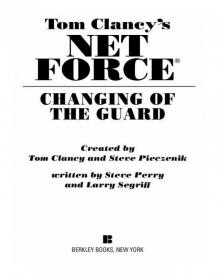 Changing of the Guard
Changing of the Guard Clear and Present Danger
Clear and Present Danger Hounds of Rome
Hounds of Rome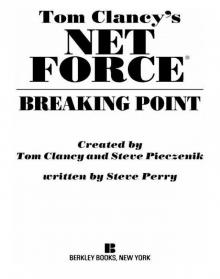 Breaking Point
Breaking Point Tom Clancy's Jack Ryan Books 7-12
Tom Clancy's Jack Ryan Books 7-12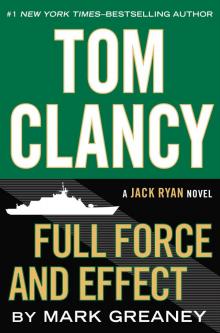 Full Force and Effect
Full Force and Effect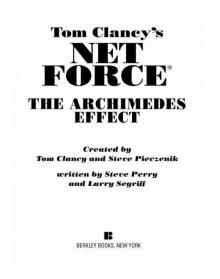 The Archimedes Effect
The Archimedes Effect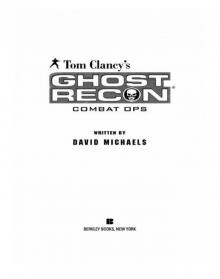 Combat Ops
Combat Ops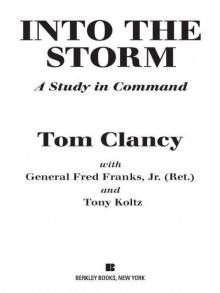 Into the Storm: On the Ground in Iraq
Into the Storm: On the Ground in Iraq Under Fire
Under Fire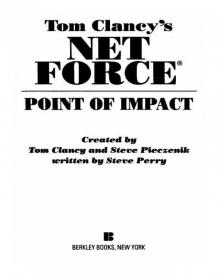 Point of Impact
Point of Impact Red Rabbit
Red Rabbit Rainbow Six
Rainbow Six The Hunt for Red October
The Hunt for Red October The Teeth of the Tiger
The Teeth of the Tiger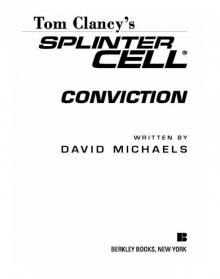 Conviction (2009)
Conviction (2009)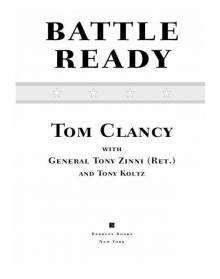 Battle Ready
Battle Ready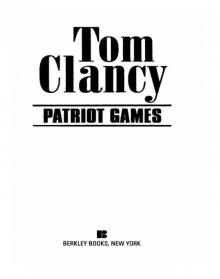 Patriot Games
Patriot Games The Sum of All Fears
The Sum of All Fears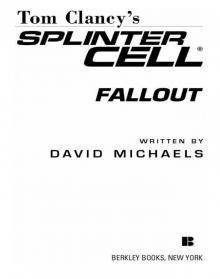 Fallout (2007)
Fallout (2007) Red Storm Rising
Red Storm Rising The Cardinal of the Kremlin
The Cardinal of the Kremlin Executive Orders
Executive Orders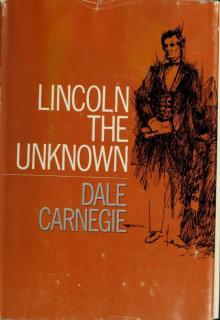 Lincoln, the unknown
Lincoln, the unknown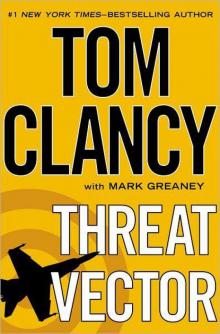 Threat Vector
Threat Vector The Hunted
The Hunted Shadow Warriors: Inside the Special Forces
Shadow Warriors: Inside the Special Forces End Game
End Game Special Forces: A Guided Tour of U.S. Army Special Forces
Special Forces: A Guided Tour of U.S. Army Special Forces Locked On
Locked On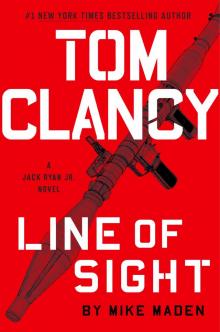 Line of Sight
Line of Sight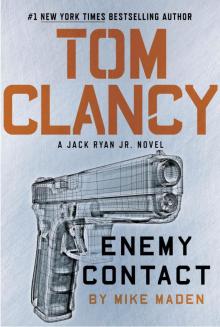 Tom Clancy Enemy Contact - Mike Maden
Tom Clancy Enemy Contact - Mike Maden Fighter Wing: A Guided Tour of an Air Force Combat Wing
Fighter Wing: A Guided Tour of an Air Force Combat Wing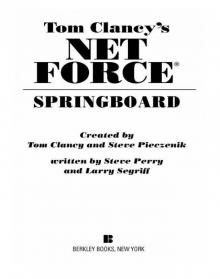 Springboard
Springboard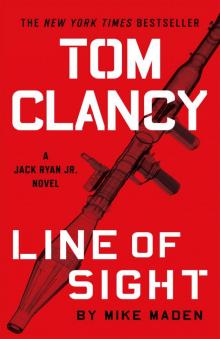 Line of Sight - Mike Maden
Line of Sight - Mike Maden EndWar
EndWar Dead or Alive
Dead or Alive Tom Clancy Support and Defend
Tom Clancy Support and Defend Checkmate
Checkmate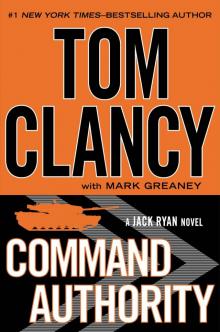 Command Authority
Command Authority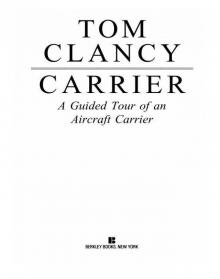 Carrier: A Guided Tour of an Aircraft Carrier
Carrier: A Guided Tour of an Aircraft Carrier Blacklist Aftermath
Blacklist Aftermath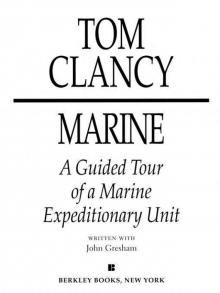 Marine: A Guided Tour of a Marine Expeditionary Unit
Marine: A Guided Tour of a Marine Expeditionary Unit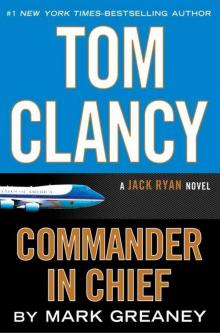 Commander-In-Chief
Commander-In-Chief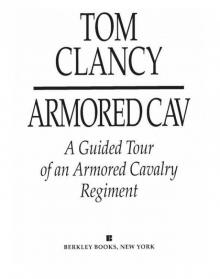 Armored Cav: A Guided Tour of an Armored Cavalry Regiment
Armored Cav: A Guided Tour of an Armored Cavalry Regiment Tom Clancy's Jack Ryan Books 1-6
Tom Clancy's Jack Ryan Books 1-6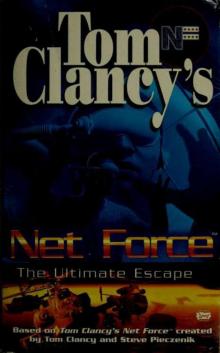 The Ultimate Escape
The Ultimate Escape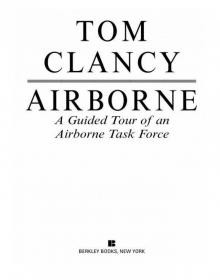 Airborne: A Guided Tour of an Airborne Task Force
Airborne: A Guided Tour of an Airborne Task Force Debt of Honor
Debt of Honor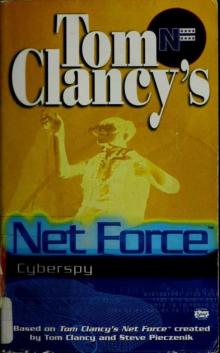 Cyberspy
Cyberspy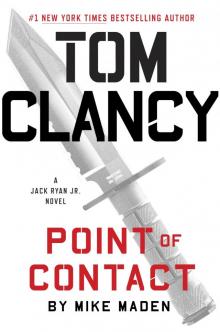 Point of Contact
Point of Contact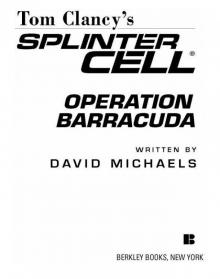 Operation Barracuda (2005)
Operation Barracuda (2005)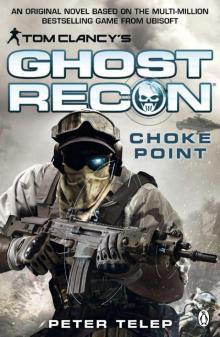 Choke Point
Choke Point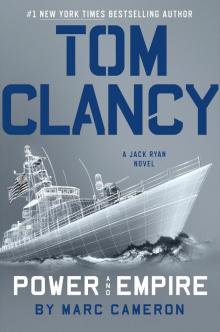 Power and Empire
Power and Empire Every Man a Tiger: The Gulf War Air Campaign
Every Man a Tiger: The Gulf War Air Campaign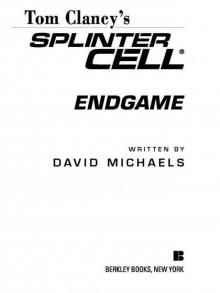 Endgame (1998)
Endgame (1998) EndWar: The Missing
EndWar: The Missing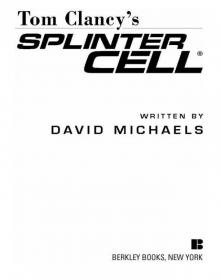 Splinter Cell (2004)
Splinter Cell (2004) The Great Race
The Great Race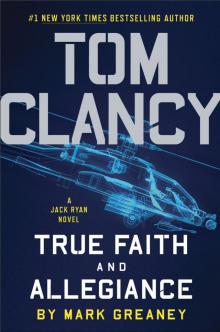 True Faith and Allegiance
True Faith and Allegiance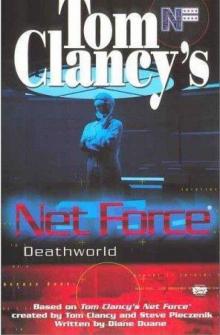 Deathworld
Deathworld Ghost Recon (2008)
Ghost Recon (2008)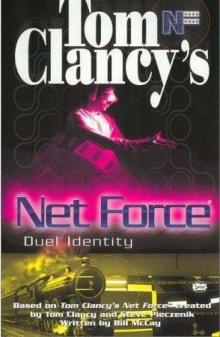 Duel Identity
Duel Identity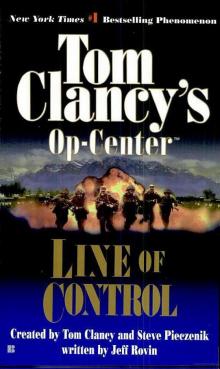 Line of Control o-8
Line of Control o-8 The Hunt for Red October jr-3
The Hunt for Red October jr-3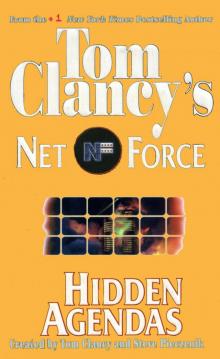 Hidden Agendas nf-2
Hidden Agendas nf-2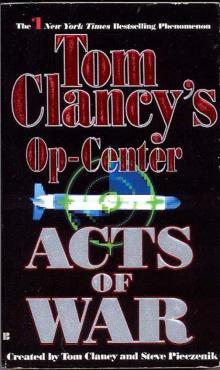 Acts of War oc-4
Acts of War oc-4 Ruthless.Com pp-2
Ruthless.Com pp-2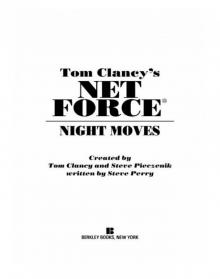 Night Moves
Night Moves The Hounds of Rome - Mystery of a Fugitive Priest
The Hounds of Rome - Mystery of a Fugitive Priest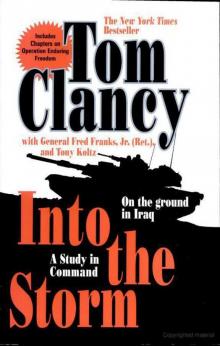 Into the Storm: On the Ground in Iraq sic-1
Into the Storm: On the Ground in Iraq sic-1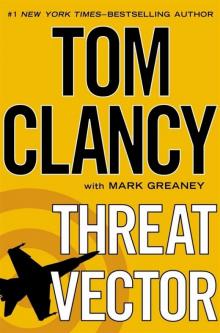 Threat Vector jrj-4
Threat Vector jrj-4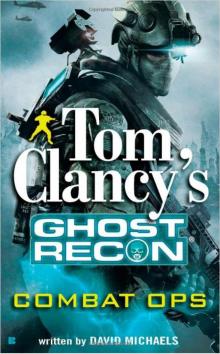 Combat Ops gr-2
Combat Ops gr-2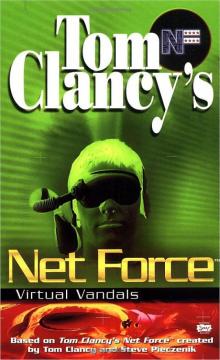 Virtual Vandals nfe-1
Virtual Vandals nfe-1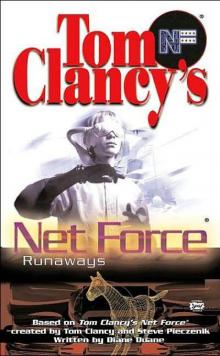 Runaways nfe-16
Runaways nfe-16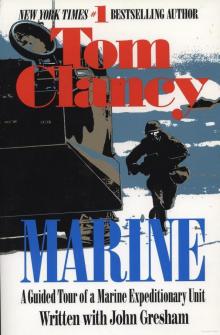 Marine: A Guided Tour of a Marine Expeditionary Unit tcml-4
Marine: A Guided Tour of a Marine Expeditionary Unit tcml-4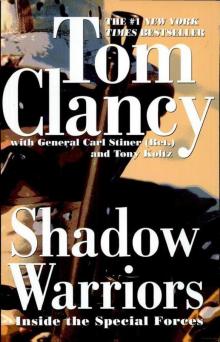 Shadow Warriors: Inside the Special Forces sic-3
Shadow Warriors: Inside the Special Forces sic-3 Jack Ryan Books 1-6
Jack Ryan Books 1-6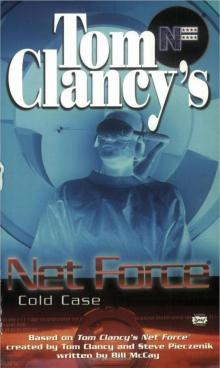 Cold Case nfe-15
Cold Case nfe-15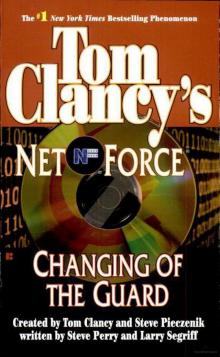 Changing of the Guard nf-8
Changing of the Guard nf-8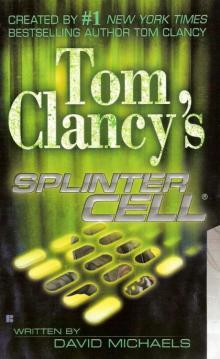 Splinter Cell sc-1
Splinter Cell sc-1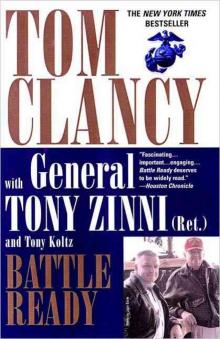 Battle Ready sic-4
Battle Ready sic-4 The Bear and the Dragon jrao-11
The Bear and the Dragon jrao-11 Fighter Wing: A Guided Tour of an Air Force Combat Wing tcml-3
Fighter Wing: A Guided Tour of an Air Force Combat Wing tcml-3 Patriot Games jr-1
Patriot Games jr-1 Jack Ryan Books 7-12
Jack Ryan Books 7-12 Mission of Honor o-9
Mission of Honor o-9 Private Lives nfe-9
Private Lives nfe-9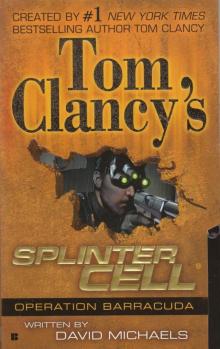 Operation Barracuda sc-2
Operation Barracuda sc-2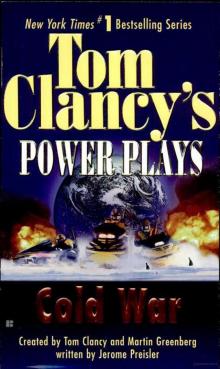 Cold War pp-5
Cold War pp-5 Point of Impact nf-5
Point of Impact nf-5 Red Rabbit jr-9
Red Rabbit jr-9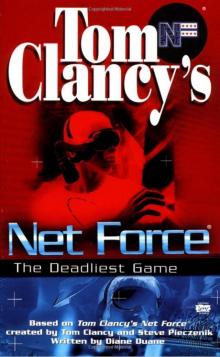 The Deadliest Game nfe-2
The Deadliest Game nfe-2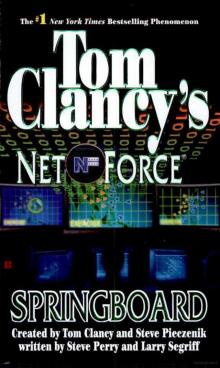 Springboard nf-9
Springboard nf-9 Safe House nfe-10
Safe House nfe-10 EndWar e-1
EndWar e-1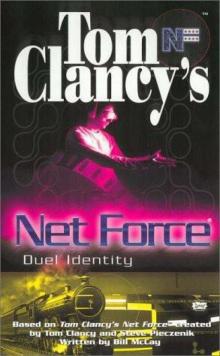 Duel Identity nfe-12
Duel Identity nfe-12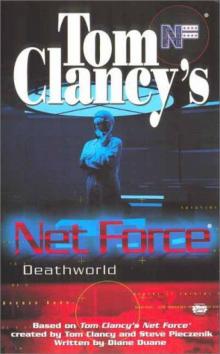 Deathworld nfe-13
Deathworld nfe-13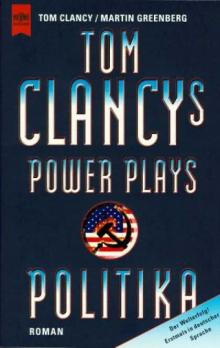 Politika pp-1
Politika pp-1 Rainbow Six jr-9
Rainbow Six jr-9 Tom Clancy's Power Plays 1 - 4
Tom Clancy's Power Plays 1 - 4 Endgame sc-6
Endgame sc-6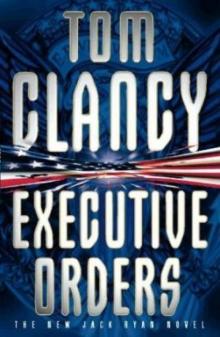 Executive Orders jr-7
Executive Orders jr-7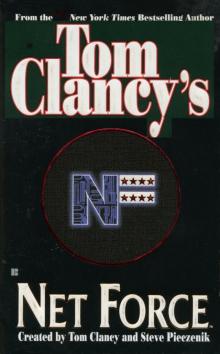 Net Force nf-1
Net Force nf-1 Call to Treason o-11
Call to Treason o-11 Locked On jrj-3
Locked On jrj-3 Against All Enemies
Against All Enemies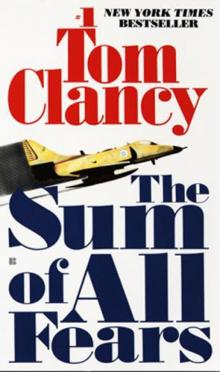 The Sum of All Fears jr-7
The Sum of All Fears jr-7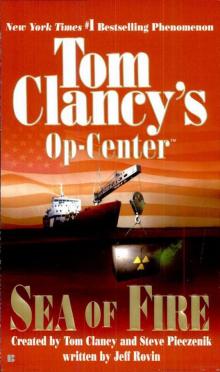 Sea of Fire o-10
Sea of Fire o-10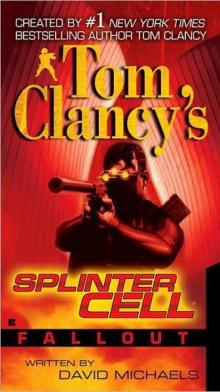 Fallout sc-4
Fallout sc-4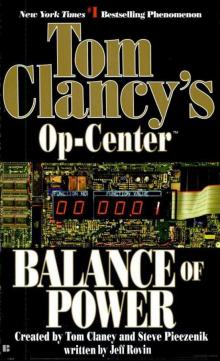 Balance of Power o-5
Balance of Power o-5 Shadow Watch pp-3
Shadow Watch pp-3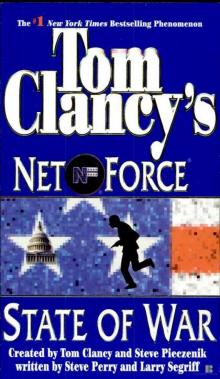 State of War nf-7
State of War nf-7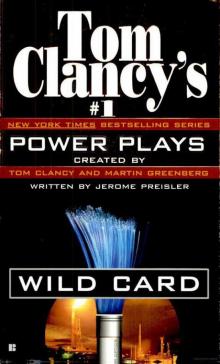 Wild Card pp-8
Wild Card pp-8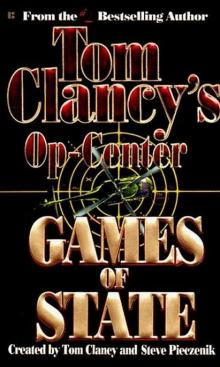 Games of State o-3
Games of State o-3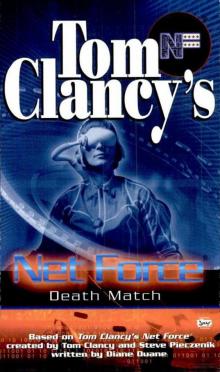 Death Match nfe-18
Death Match nfe-18 Against All Enemies mm-1
Against All Enemies mm-1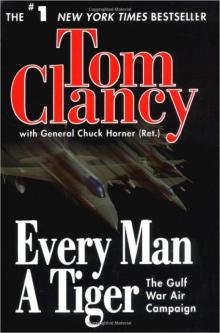 Every Man a Tiger: The Gulf War Air Campaign sic-2
Every Man a Tiger: The Gulf War Air Campaign sic-2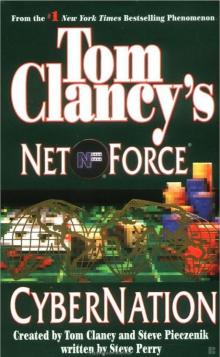 Cybernation nf-6
Cybernation nf-6 Support and Defend
Support and Defend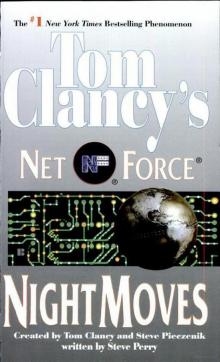 Night Moves nf-3
Night Moves nf-3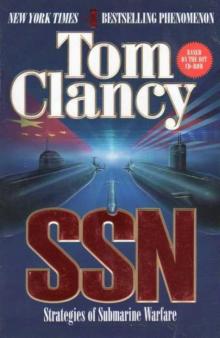 SSN
SSN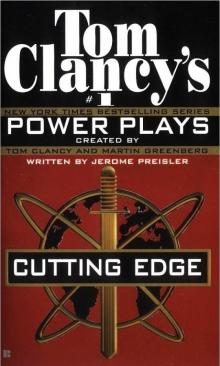 Cutting Edge pp-6
Cutting Edge pp-6 The Cardinal of the Kremlin jrao-5
The Cardinal of the Kremlin jrao-5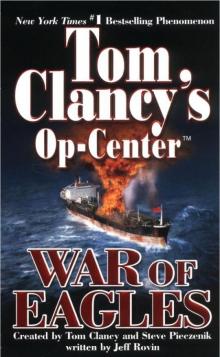 War of Eagles o-12
War of Eagles o-12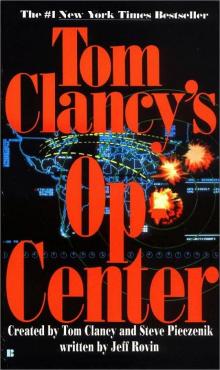 Op-Center o-1
Op-Center o-1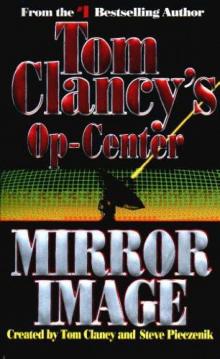 Mirror Image o-2
Mirror Image o-2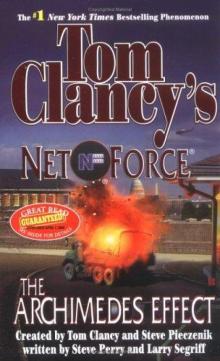 The Archimedes Effect nf-10
The Archimedes Effect nf-10 Teeth of the Tiger jrj-1
Teeth of the Tiger jrj-1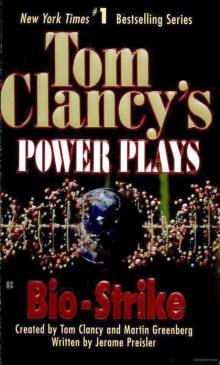 Bio-Strike pp-4
Bio-Strike pp-4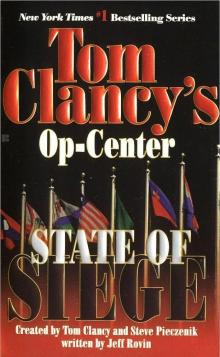 State of Siege o-6
State of Siege o-6 Debt of Honor jr-6
Debt of Honor jr-6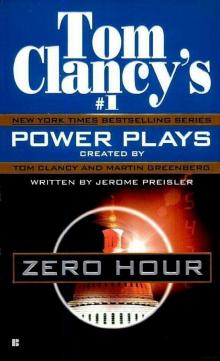 Zero Hour pp-7
Zero Hour pp-7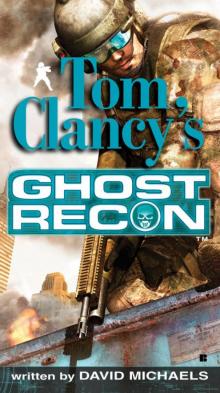 Ghost Recon gr-1
Ghost Recon gr-1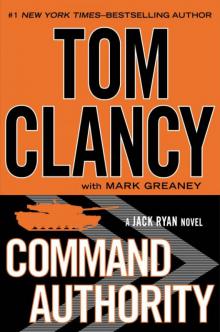 Command Authority jr-10
Command Authority jr-10 Tom Clancy's Power Plays 5 - 8
Tom Clancy's Power Plays 5 - 8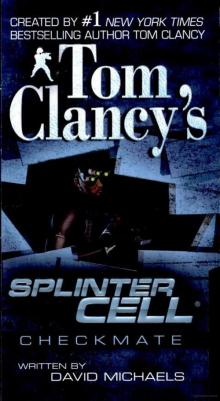 Checkmate sc-3
Checkmate sc-3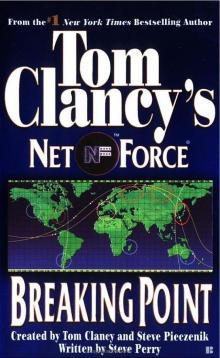 Breaking Point nf-4
Breaking Point nf-4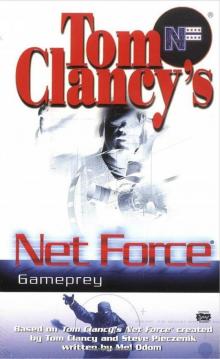 Gameprey nfe-11
Gameprey nfe-11 The Hunted e-2
The Hunted e-2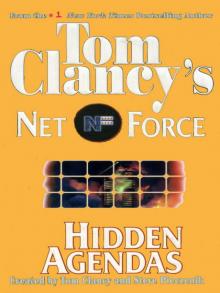 Hidden Agendas
Hidden Agendas Divide and Conquer o-7
Divide and Conquer o-7